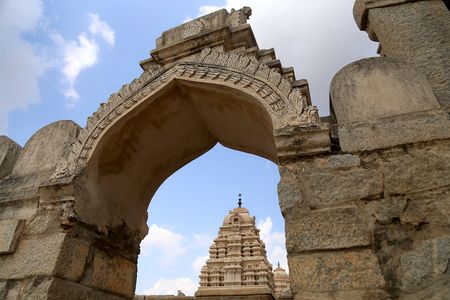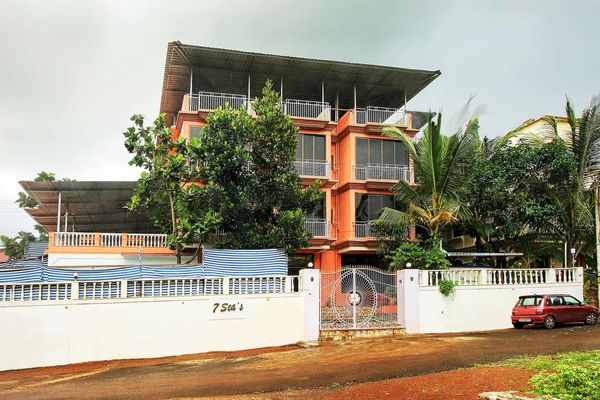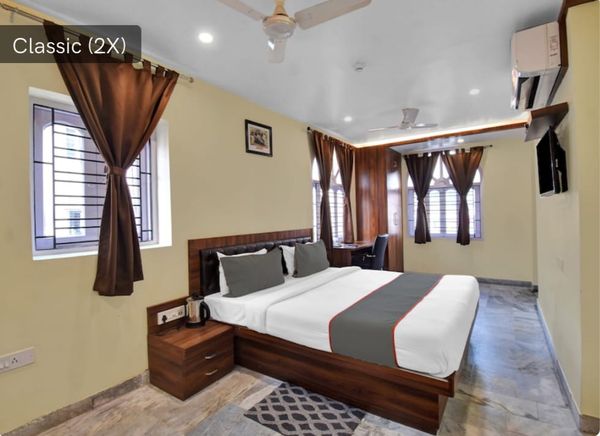Lepakshi Temple – A Mesmerizing Blend of History and Mythology
 Rohit Sen
22 Mar, 2025
6 mins read
2
Rohit Sen
22 Mar, 2025
6 mins read
2

Lepakshi Temple is not just a place; it’s a journey back in time. The moment you step into this ancient marvel, the air around you whispers stories from centuries ago. Located in the Anantapur district of Andhra Pradesh, this temple is a treasure trove of history, architecture, and legend. If you are a history buff, an architecture enthusiast, or a spiritual seeker, Lepakshi Temple will captivate your heart.
The Legendary Tale Behind Lepakshi Temple
Every temple has a story, but Lepakshi’s legend is one that enthralls everyone. The name "Lepakshi" has its roots in the Ramayana. According to mythology, when Ravana was abducting Sita, the divine bird Jatayu fought valiantly to save her. Gravely wounded, he fell at this very spot. When Lord Rama found him, he compassionately uttered, "Le Pakshi!" which means "Rise, O bird!" Thus, the place got its name.
The temple itself was built in the 16th century by Virupanna Nayaka, a governor under the Vijayanagara Empire. The structure stands as a testament to the exquisite craftsmanship of the time, making it an unmissable heritage site.
Architectural Marvels That Leave You Spellbound
Walking into Lepakshi Temple is like stepping into an open-air museum. The temple is built in the Vijayanagara architectural style, featuring intricate carvings, grand pillars, and magnificent murals. One of the most astonishing features is the hanging pillar. This pillar does not touch the ground completely, defying gravity. Visitors often test this mystery by passing a cloth underneath. It is said that British engineers once tried to uncover the secret, but the temple’s structure started to shift, forcing them to abandon their efforts.
The temple also houses the Nagalinga, a massive serpent sculpture coiling around a Shiva Lingam. This monolithic wonder is one of the largest of its kind in India. Another significant structure is the gigantic monolithic Nandi, located a short distance away from the temple. This colossal statue, carved from a single granite block, is one of India’s biggest Nandi idols.
Mesmerizing Frescoes and Sculptures
The ceilings of Lepakshi Temple boast breathtaking frescoes depicting scenes from the Ramayana and Mahabharata. These paintings, done using natural pigments, have stood the test of time, retaining their charm even after centuries. The walls and pillars narrate countless mythological stories through intricate carvings. Each sculpture tells a tale, be it the divine dance of Shiva in the Natya Mandapa or the sculptures of celestial beings. The Kalyana Mandapa, an unfinished wedding hall, is believed to be the site where Lord Shiva and Goddess Parvati’s celestial wedding was planned.
Spiritual and Cultural Significance
Lepakshi Temple is a prominent pilgrimage site, especially for devotees of Lord Shiva. The Veerabhadra deity worshipped here is considered an incarnation of Lord Shiva in his fierce form. The temple sees a large influx of devotees during festivals like Mahashivaratri, when the entire complex comes alive with prayers and celebrations.
Besides religious significance, the temple is a cultural gem. Many dance and art enthusiasts visit to study the temple’s architecture and murals, making it a paradise for scholars and artists alike.
Best Time to Visit and Travel Tips
The best time to visit Lepakshi Temple is during winter and early summer (October to March) when the weather is pleasant. The scorching summer heat can be overwhelming, so planning a morning visit is ideal.
How to Reach Lepakshi Temple
- By Air: The nearest airport is Kempegowda International Airport (Bangalore), about 100 km away.
- By Rail: The closest railway station is Hindupur, just 15 km from the temple.
- By Road: It is well connected by road, and a scenic drive from Bangalore (120 km) makes for a perfect weekend getaway.
Travel Tips
- Wear comfortable footwear as you’ll be walking a lot.
- Carry a hat and sunscreen if visiting during summer.
- Photography is allowed, but avoid flash for mural preservation.
- Hire a local guide to understand the historical and mythological significance.
Conclusion – A Must-Visit Heritage Site
Lepakshi Temple is more than just a place of worship; it is an experience that blends history, mythology, and stunning architecture. Whether you seek spiritual solace, historical insights, or artistic inspiration, this temple will leave you in awe. So, pack your bags and embark on a journey to this timeless wonder!
Written By:
Rohit Sen



Hotels at your convenience
Now choose your stay according to your preference. From finding a place for your dream destination or a mere weekend getaway to business accommodations or brief stay, we have got you covered. Explore hotels as per your mood.





